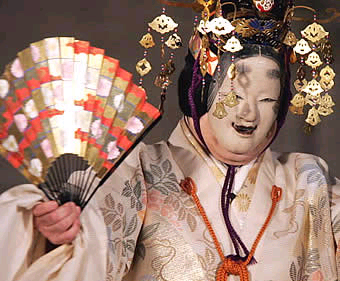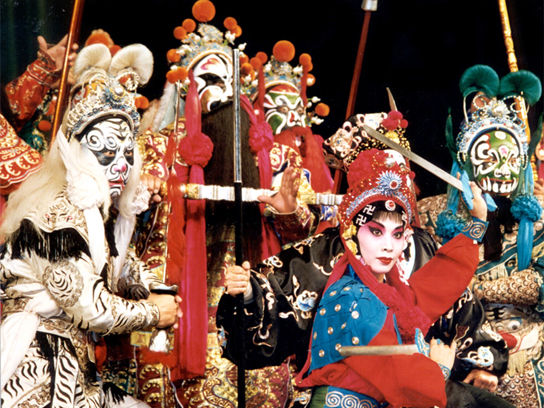
As the Mainichi explains, this Noh actor is performing Hagoromo, where one finds such dulcet passages as "the heavenly feather-robe moves in accord with the wind," printed in this 1916 translation by Ezra Pound. Here's Noh in the eyes of a devoted foreigner:
In general, Japanese Noh plays are not very dramatic, although they are beautiful, since the text is full of poetical allusions and the dances, though slow, are extremely elegant. It is this very beauty which makes Noh a living art form still, over six hundred years after it developed, and which has caused all subsequent Japanese theatrical forms to draw on aspects of Noh. Kabuki, for example, has lifted complete Noh plays into its vernacular, as well as deriving many of its technical aspects of performance from Noh.The Noh theater still speaks to audiences today, as evinced by the crowds which still rush to buy tickets for performances at the National Noh Theater, and at the five theaters belonging to the five troupes of Noh. It is a truely timeless artform, which speaks to modern audiences as it did to the noblemen and women of the Muromachi period.
Fascinating stuff, though when it comes to flashy-wardrobe stage plays in the Orient, Beijing Opera stole this neophyte's heart first. From the Chang'an Theatre:

Yes, the following is a very American thing to say, but — think of the costume party possibilities. I certainly am. A little more greasepaint to scrub at the end of the night, perhaps, though well worth the impression.